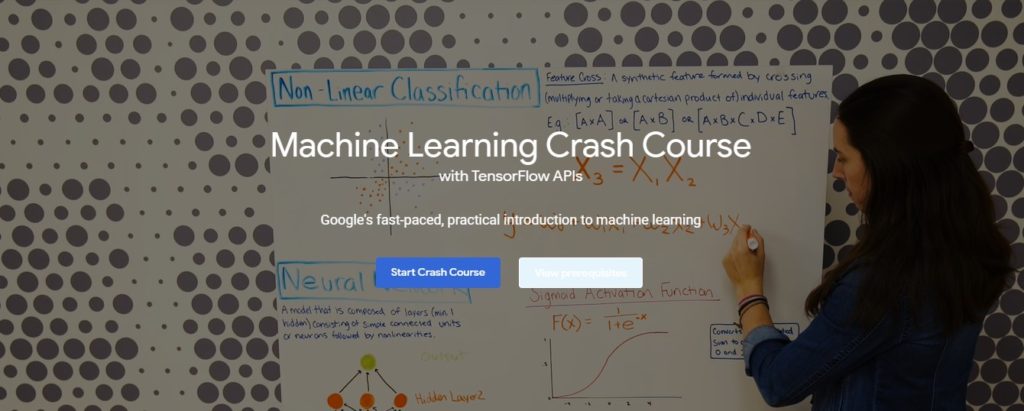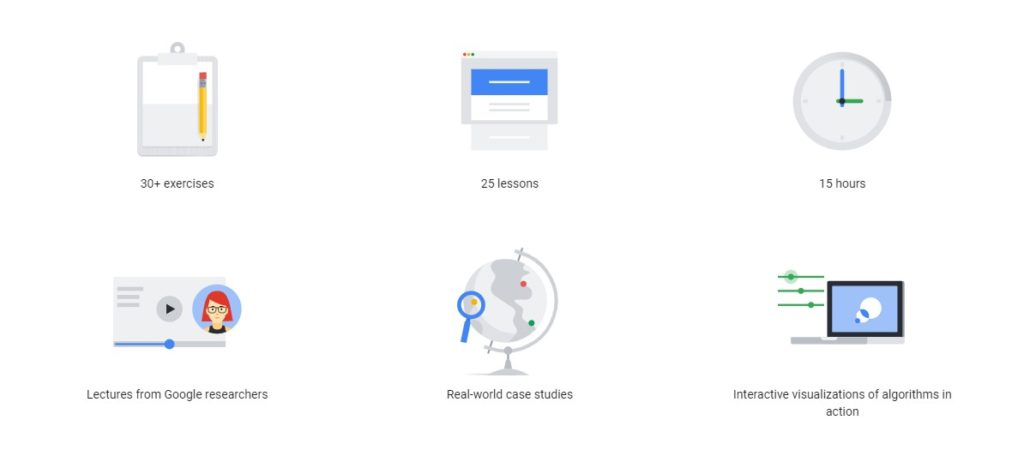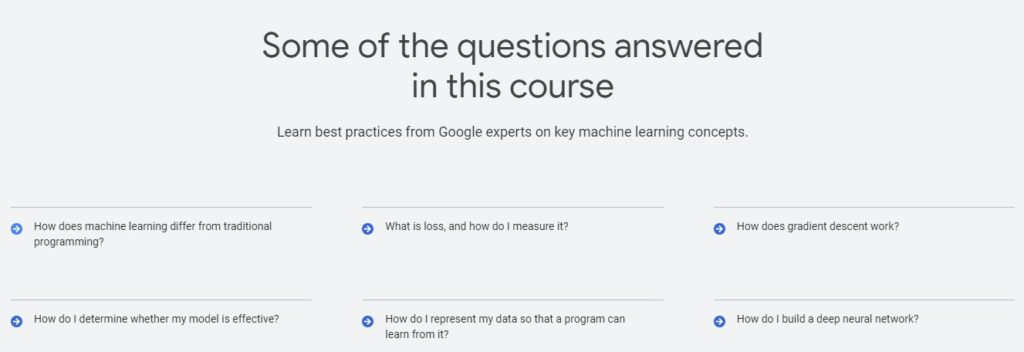Free Google Machine Learning Crash Course offer to all the learners

A self-study guide for aspiring machine learning practitioners
Table of Contents
Machine Learning Crash Course features a series of lessons with video lectures, real-world case studies, and hands-on practice exercises.

Is Machine Learning Crash Course right for you?
If you have little or no machine learning background, then you can follow the below pathway to learn more about ML.
Prework
Before beginning Machine Learning Crash Course, do the following:
- If you’re new to machine learning, take Introduction to Machine Learning Problem Framing. This one-hour self-study course teaches you how to identify appropriate problems for machine learning.
- If you are new to NumPy, do the NumPy Ultraquick Tutorial Colab exercise, which provides all the NumPy information you need for this course.
- If you are new to pandas, do the pandas UltraQuick Tutorial Colab exercise, which provides all the pandas information you need for this course.
Prerequisites for Free Google Machine Learning Crash Course offer
Machine Learning Crash Course does not presume or require any prior knowledge in machine learning.
However, to understand the concepts presented and complete the exercises, we recommend that students meet the following prerequisites:
- You must be comfortable with variables, linear equations, graphs of functions, histograms, and statistical means.
- You should be a good programmer. Ideally, you should have some experience programming in Python because the programming exercises are in Python. However, experienced programmers without Python experience can usually complete the programming exercises anyway.
The following sections provide links to additional background material that is helpful.
Algebra
- variables, coefficients, and functions
- linear equations such as y=b+w1x1+w2x2
- logarithms, and logarithmic equations such as y=ln(1+ez)
- sigmoid function
Linear algebra
Trigonometry
- tanh (discussed as an activation function; no prior knowledge needed)
Statistics
- mean, median, outliers, and standard deviation
- ability to read a histogram
Calculus (optional, for advanced topics)
- concept of a derivative (you won’t have to actually calculate derivatives)
- gradient or slope
- partial derivatives (which are closely related to gradients)
- chain rule (for a full understanding of the backpropagation algorithm for training neural networks)
Python Programming
The following Python basics are covered in The Python Tutorial:
- defining and calling functions, using positional and keyword parameters
- dictionaries, lists, sets (creating, accessing, and iterating)
forloops,forloops with multiple iterator variables (e.g.,for a, b in [(1,2), (3,4)])if/elseconditional blocks and conditional expressions- string formatting (e.g.,
'%.2f' % 3.14) - variables, assignment, basic data types (
int,float,bool,str)
A few of the programming exercises use the following more advanced Python concept:
Bash Terminal / Cloud Console
To run the programming exercises on your local machine or in a cloud console, you should be comfortable working on the command line:

I hope you will put your best effort to learn and apply fundamental machine learning concepts with the Crash Course, get real-world experience with the companion Kaggle competition
You can visit Learn with Google AI to explore the full library of training resources.
Happy Learning!!
